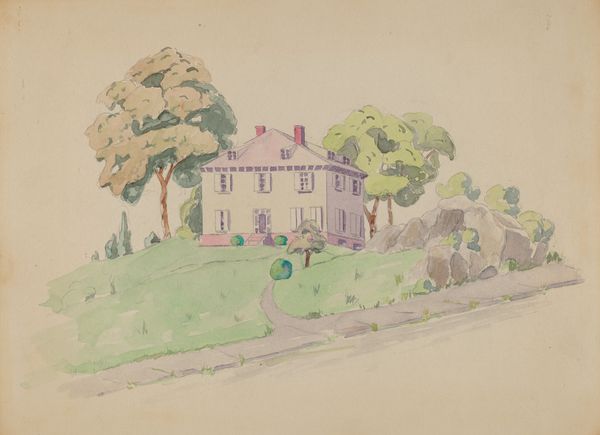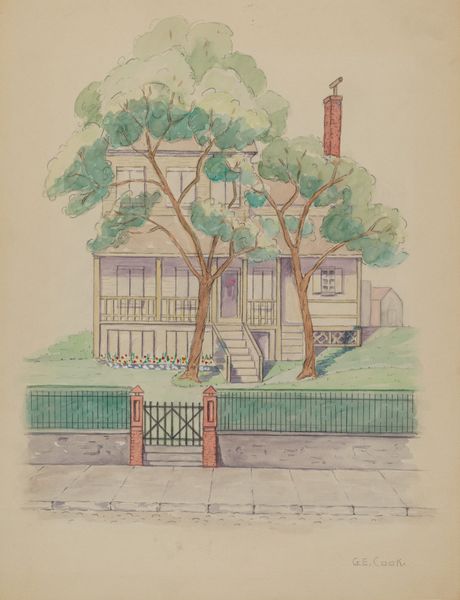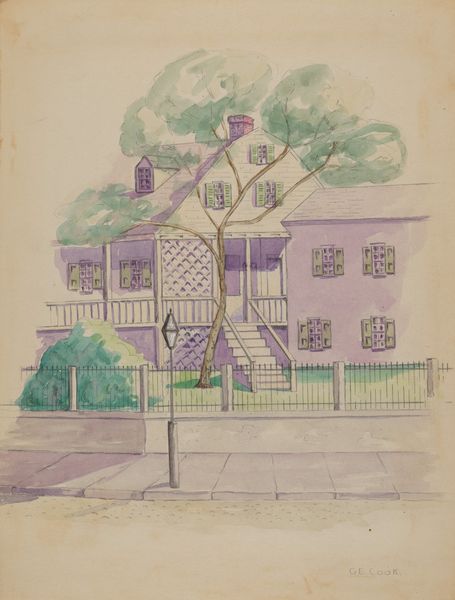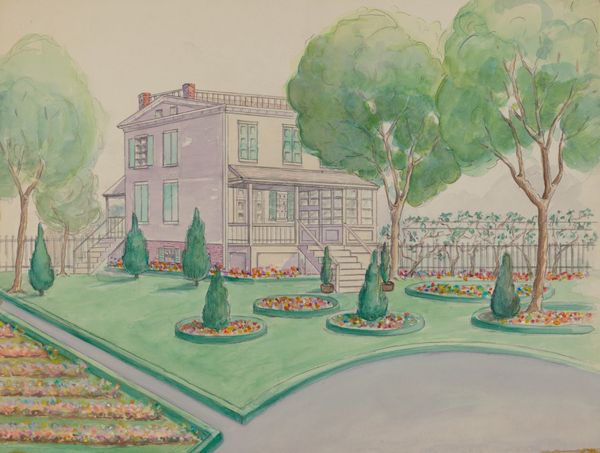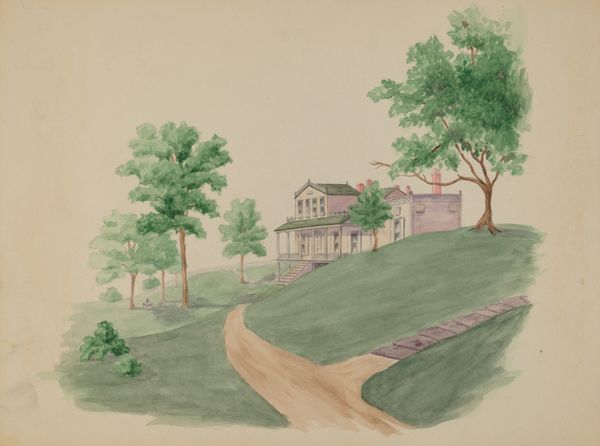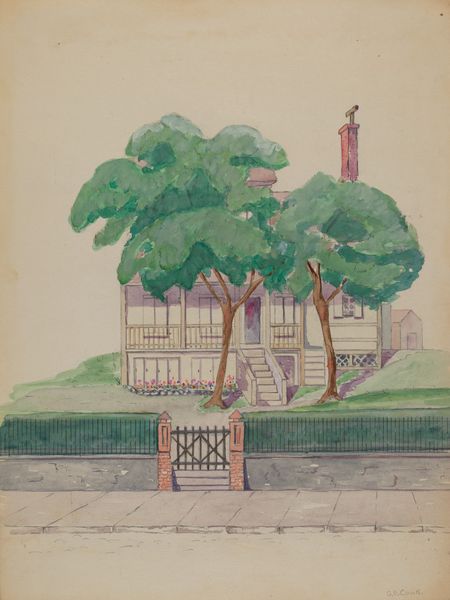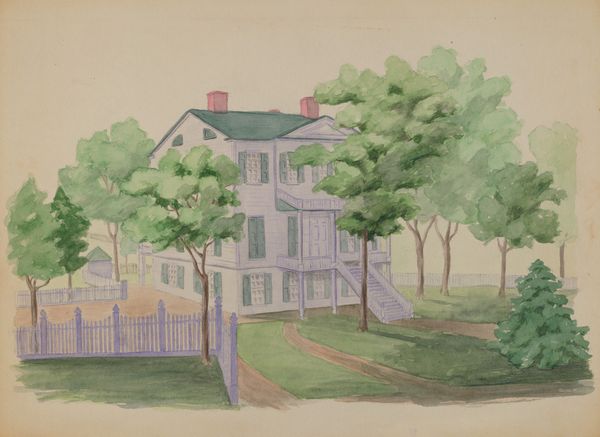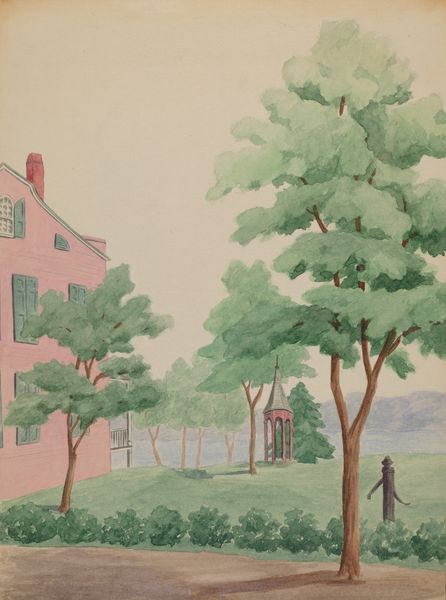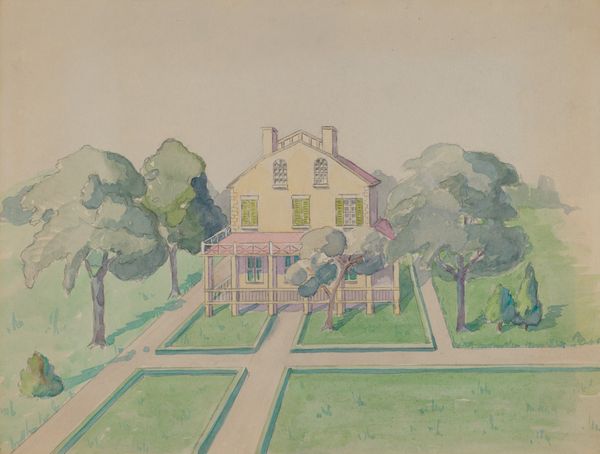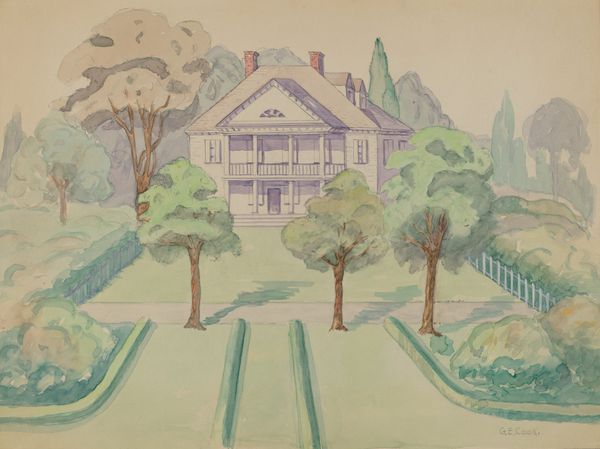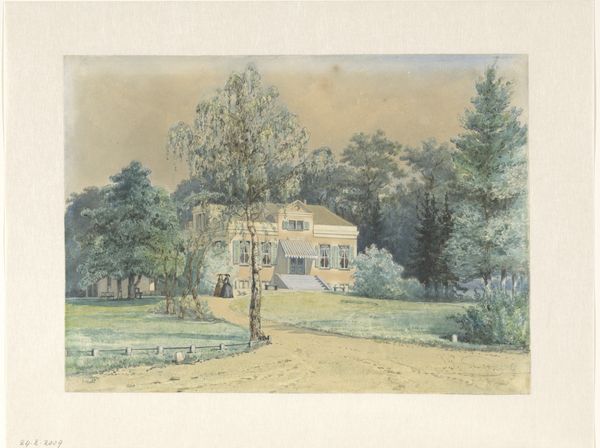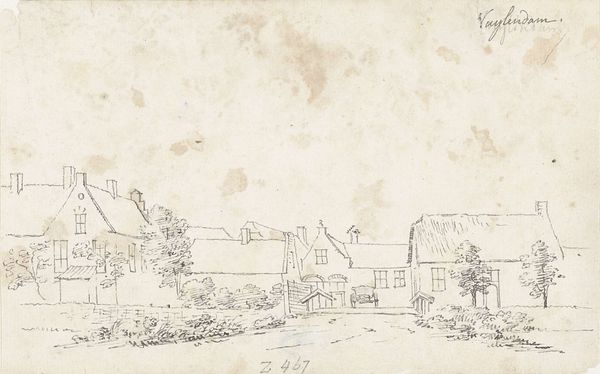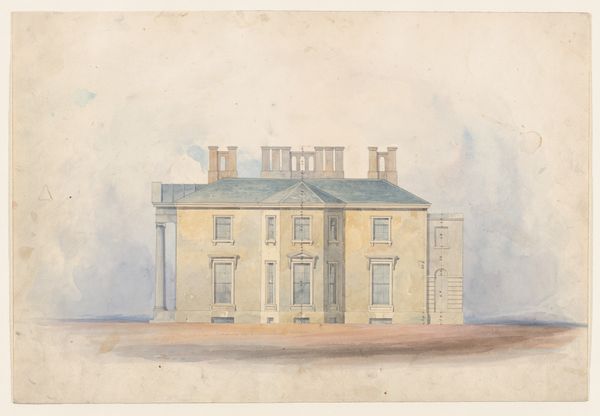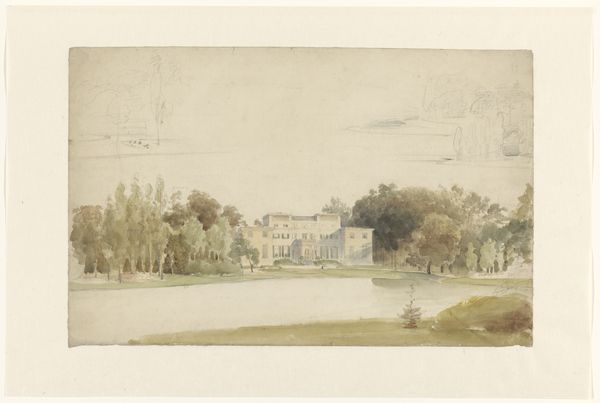
drawing, plein-air, watercolor
#
drawing
#
plein-air
#
landscape
#
watercolor
#
genre-painting
#
modernism
#
watercolor
#
realism
Dimensions: overall: 22.8 x 30 cm (9 x 11 13/16 in.)
Copyright: National Gallery of Art: CC0 1.0
Curator: Gladys Cook's watercolor, "Cargle Estate," created around 1936, depicts a picturesque residence framed by mature trees. What strikes you initially about this composition? Editor: It evokes a sense of gentle serenity. The pastel hues and soft washes of color lend it a nostalgic, almost dreamlike quality. It's a very polite and civilized landscape. Curator: I'm particularly interested in Cook's handling of light and shadow. Note how she employs transparent layers of pigment to capture the subtle variations in illumination across the scene. This allows light to modulate form. The positive and negative space plays against one another elegantly. Editor: Yes, and look at the societal context during that time! The mid-1930s were still entrenched in the Great Depression. Do you think the artist sought to offer an idealized vision of stability and comfort? Almost propagandistic against hard times? The setting suggests middle-class prosperity even as so many Americans struggled. Curator: Perhaps. Though I wonder if focusing purely on historical context eclipses Cook’s sophisticated rendering technique. The repetition of vertical elements—the trees, the chimneys, even the fence posts—establishes a rhythmic structure that anchors the composition, regardless of whether that structure carries contextual intent. Editor: I grant you the vertical rhythm. But to consider it apart from the era is artificial. Visual culture reinforces ideologies. An artwork such as this perhaps subtly affirmed class divisions or the existing social order amid great upheaval. It reinforces a sense of safety and social harmony during a period of significant societal unrest. The architecture appears as a form of subtle social persuasion. Curator: A valid reading, but ultimately, the interplay of form, color, and light provides—for me, at least—the core aesthetic experience, however compromised it might be within its historical milieu. Editor: And for me, it is how that milieu speaks through every careful brushstroke, revealing hidden dialogues that resonate far beyond its immediate subject. Curator: A dialogue worth having, in any event.
Comments
No comments
Be the first to comment and join the conversation on the ultimate creative platform.
